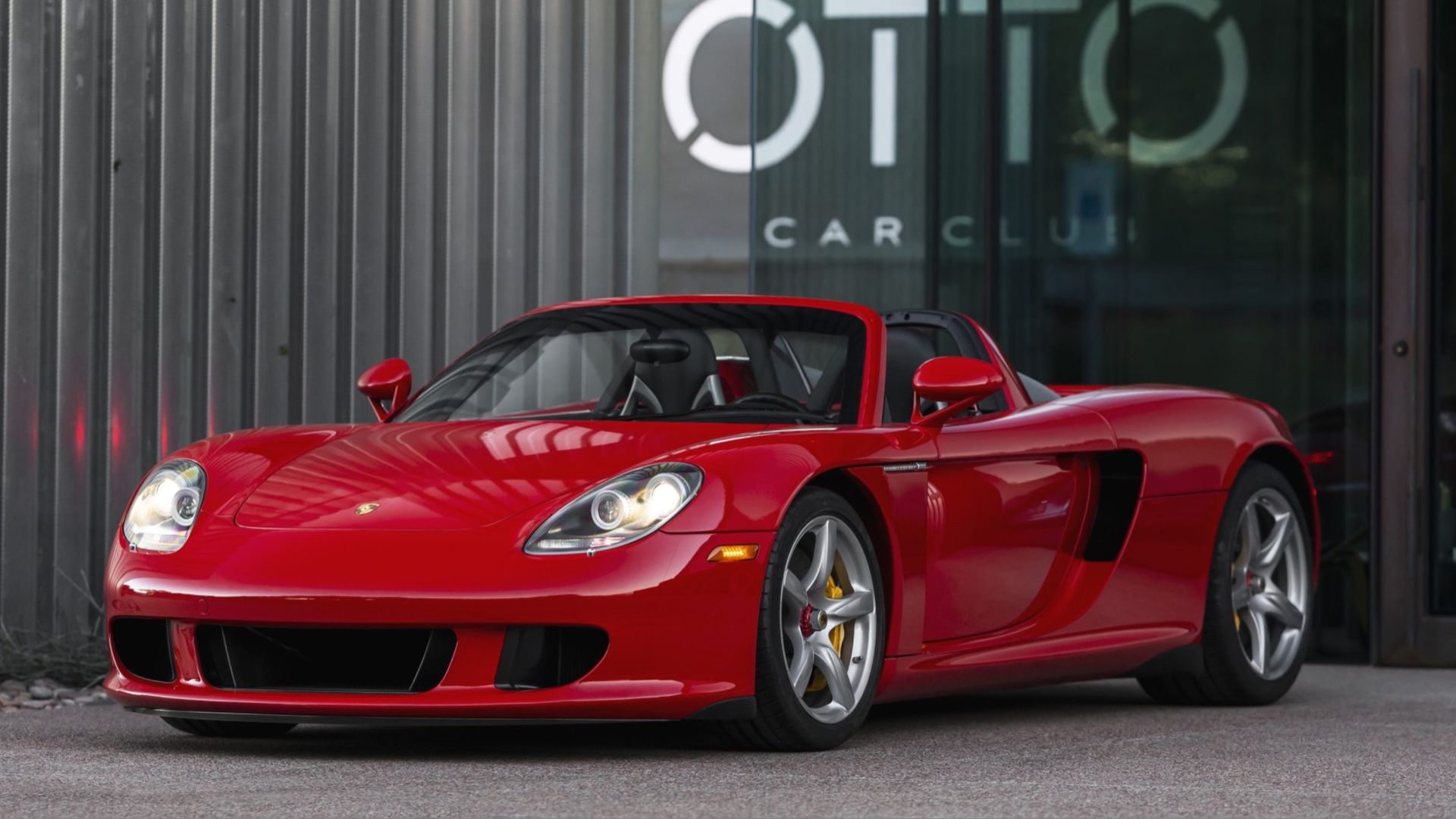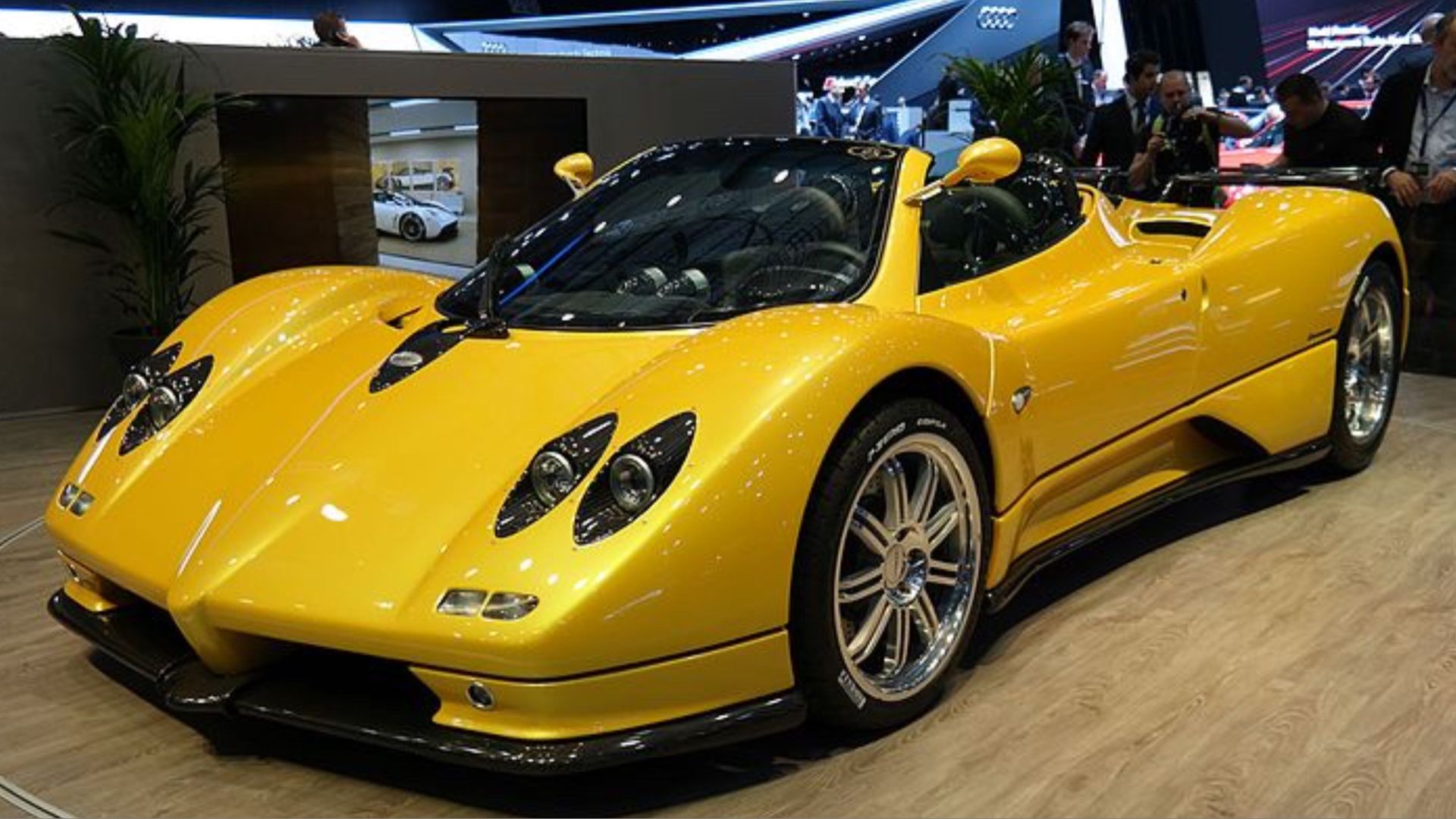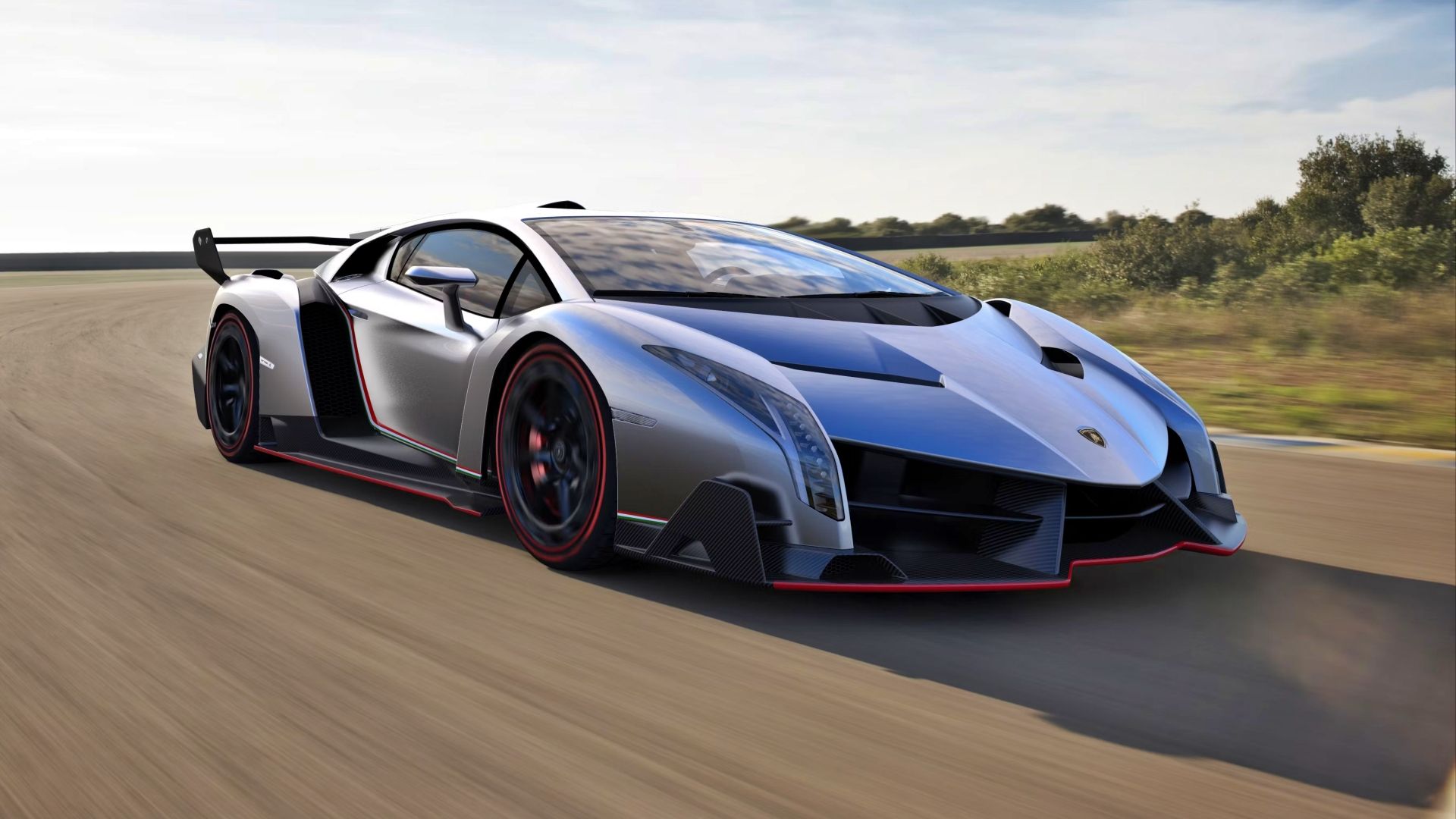Summary
- Turbo engines produce more horsepower by forcing high-pressure air into the cylinders, allowing for faster fuel burn and increased power.
- Naturally, aspirated cars can still achieve high horsepower without the use of turbochargers, making their performance more impressive and honest.
- The McLaren F1 holds the title for the fastest naturally aspirated car of all time, reaching a top speed of 240 mph.
People assume that a turbocharged car is faster than a normal one, mostly because the suffix “turbo” much like “hyper” is synonymous with speed. They are, by the way, correct that turbo engines produce more horsepower, but probably don’t know why. In the easiest of terms, a turbocharger forces high-pressure air into the cylinders, allowing fuel to be burned at a faster rate, which translates into more power. It does however seem like cheating when naturally aspirated engines work so hard to make horsepower without any gimmicks.
Since the faster an engine can consume fuel is related to how much power it makes, one way to increase the ponies is to add more cylinders: i.e. a V-8 kicks an I-4’s butt. Another way to increase the horsepower is with a turbocharger. Car and Driver tells us that the first production car with a factory-equipped turbocharged engine was the 1962 Chevrolet Corvair. The flat-six in the Corvair was originally rated at 90 horsepower, but once it got turbocharged, went up to an astonishing 180 horsepower. Generally speaking, turbos don’t always double an engine’s horsepower, but in this case, it did.
Nowadays, there are turbos, twin-turbos, and quad-turbos on engines that are already powerful and turn them into four-digit horsepower-cranking beasts. The turbocharged 6.2-liter Hellcat V-8 in the 2023 Dodge Challenger SRT Demon 170 pushes out 1,025 horsepower, while the 8.0-liter quad-turbocharged 16-cylinder of the 2012 Bugatti Veyron 16.4 Grand Sport Vitesse blasts out 1,184. Again, this augmented speed seems a little sneaky so let’s celebrate the 10 fastest hard-working naturally aspirated cars that top 200 mph.
This list could be as boring as nine Ferrari variants and a McLaren, nine Lamborghini models, and a McLaren, or nine obscure supercars for which only a handful were ever made and a McLaren. Since this is a celebration of the honest NA car, it will lean heavily on production vehicles people have heard of and were maybe even street-legal. We’ve looked at data from the automakers, Road and Track, Car and Driver to put this list together on the fastest cars to feature a naturally-aspirated engine.
10 2012 Lexus LFA
Top Speed: 202 mph
The Lexus LFA was a limited-edition sports car with seemingly unlimited speed. The naturally aspirated V-10 was so powerful that Lexus hired race car driver Scott Pruett to give prospective buyers a track lesson in how not to kill themselves with the car’s unholy speed. In a Car and Driver test drive, the reviewer indicated that the car’s 200-plus mph top speed was limited so this thing may be even faster than advertised.
Power and Performance
|
Engine |
4.8-liter V-10 |
|
Engine Output |
553 horsepower, 354 pound-feet of torque |
|
Transmission |
Six-speed automated manual |
|
0-60 Time |
3.7 seconds |
|
Quarter-mile |
11.8 seconds |
|
Top Speed |
202 mph |
Limited to a total of 500 cars worldwide, the LFA had a base price of $375,000. To keep buyers from flipping these rare magnificent vehicles, Lexus initially only offered them with a two-year lease in North America. They later switched that to outright sales, but buyers had to sign an agreement that they wouldn’t sell the cars for two years, or back to the dealer at fair-market value or original sticker price, whichever was lower.
9 2022 Audi R8 Performance RWD
Top Speed: 204 mph
Audi bills its mid-engine two-seat R8s as sports cars, but they share a V-10 engine and platform with the Lamborghini Huracán, so in reality they are supercars. They certainly have supercar performance, like the 2022 R8 Performance RWD, which can snap necks from standing stop and stretch faces with top-speed G-forces.
Power and Performance
|
Engine |
5.2-liter V-10 |
|
Engine Output |
562 horsepower, 406 pound-feet of torque |
|
Transmission |
Seven-speed dual-clutch automatic |
|
0-60 Time |
3.4 seconds |
|
Quarter-mile |
11.5 seconds |
|
Top Speed |
204 mph |
The R8 isn’t just a supercar, it’s a superhero too, appearing in several Marvel movies. Tony Stark drove a Type 42 in Iron Man, a V-10 Spyder in Iron Man 2, and an e-tron prototype EV in Iron Man 3. There was also a Type 4S V-10 Plus in both Avengers: Age of Ultron and Avengers: Civil War, as well as a Spyder appropriately in Spider-Man: Homecoming.
8 2017 Dodge SRT Viper GTS
Top Speed: 206 mph
Dodge Vipers always came with incredible power, but in the fifth, and last generation, they dropped in an 8.4-liter V-10, which is the biggest engine ever put in an American production vehicle. It’s also the most powerful, cranking out 240 more ponies than the 400 horsepower 8.0-liter V-10s of the first Vipers back in the early 90s.
Power and Performance
|
Engine |
8.4-liter V-10 |
|
Engine Output |
640 horsepower, 600 pound-feet of torque |
|
Transmission |
Six-speed automatic |
|
0-60 Time |
3.4 seconds |
|
Quarter-mile |
11.7 seconds |
|
Top Speed |
206 mph |
The fifth-gen Viper ACR came with a giant fiberglass wing that put out 1,533 pounds of downforce, which was more than any other vehicle. That kind of downforce is great for sticking to the track, but it limited the car’s top speed to around 177 mph. Without the wing, the 2013 SRT Viper GTS was unchained and blasted through the 200 mph barrier.
7 2006 Porsche Carrera GT
Top Speed: 208 mph
For reasons only known to Porsche, they only made 1,270 Carrera GTs in three years of limited production. The mid-engine Porsche looked great, was fast as lightning and made pretty much every “best performance” list in the mid-2000s. The original plan was to put a turbo flat-six in it, but some genius at the German automaker decided on a naturally aspirated V-10, which produces one of the most evocative sounds of any supercar in existence.
Power and Performance
|
Engine |
5.7-liter V-10 |
|
Engine Output |
603 horsepower, 435 pound-feet of torque |
|
Transmission |
Six-speed automatic |
|
0-60 Time |
3.3 seconds |
|
Quarter-mile |
11.1 seconds |
|
Top Speed |
208 mph |
Perhaps it was the original sticker price of $440,000, that limited the numbers on this amazing vehicle, but they sold every last one of them, so probably not. Looking back, that price was cheap compared to what they are going for now. A 2005 Carrera GT, with only 780 miles, set a record for auction site Bring a Trailer, selling for an astounding $1,902,000 last year.
6 2011 Ferrari FF
Top Speed: 208 mph
Most Ferraris from the Enzo to the aptly-named Superfast have a top speed from 200 to 211 mph. The Ferrari FF is in that range but makes the list because it’s one of the weirdest, and least Ferrari-looking cars ever made. Comedic value aside, this goofball ride could smoke just about every awesomely-styled supercar on the road.
Power and Performance
|
Engine |
6.3-liter V-12 |
|
Engine Output |
651 horsepower, 504 pound-feet of torque |
|
Transmission |
Seven-speed dual-clutch automatic |
|
0-60 Time |
3.5 seconds |
|
Quarter-mile |
11.5 seconds |
|
Top Speed |
208 mph |
The FF was billed as a Grand Tourer, but it looked more like a hot hatch that got stretched out getting sucked into a black hole. As funny as it sounds, Car and Driver China reportedly named the 2011 FF the “Most Beautiful Super Car 2011.” Regular Car and Driver didn’t love the styling as much but was diplomatic by hinting that it doesn’t look like anything Ferrari has ever built.
5 2006 Pagani Zonda F Clubsport
Top Speed: 214 mph
Italian supercar maker Pagani may not be a household name like the rest of the automakers on this list, but they do make some fairly incredible rides. They’ve proven that not only can they hang in the crowded Italian supercar market, but compete with the likes of Ferrari, Lamborghini, and Maserati. A prime example of that is the 2006 Zonda F Clubsport.
Power and Performance
|
Engine |
7.3-liter V-12 |
|
Engine Output |
641 horsepower, 575 pound-feet of torque |
|
Transmission |
Six-speed manual |
|
0-60 Time |
3.3 seconds |
|
Quarter-mile |
10.9 seconds |
|
Top Speed |
214 mph |
As one of the more stunning cars ever made, the Zonda F could have been a Batmobile, with its aerodynamic shape and dramatic fender swells. Thanks to lots of super-strong carbo-titanium materials, it’s also super-lightweight at just 2,712 pounds.
4 2011 Aston Martin One-77
Top Speed: 220 mph
The Aston Martin One-77 is another amazing vehicle that inexplicably was made in extremely limited numbers. Price be damned, this was one of the greatest and fastest Aston Martins ever produced, in terms of styling and performance, and yet only 77 of them ever came to life. Yes, it’s named the One-77 because that’s all they intended to manufacture, but they made more than 11 DB11s and nobody complained.
Power and Performance
|
Engine |
7.3-liter V-12 |
|
Engine Output |
750 horsepower, 553 pound-feet of torque |
|
Transmission |
Six-speed automated manual |
|
0-60 Time |
3.5 seconds |
|
Quarter-mile |
10.65 seconds |
|
Top Speed |
220 mph |
Actually, there are 78 of these magnificent rides because one of the development cars was sent back to Aston Martin for a complete refurbishment, making it a true One-77. The number of existing One-77s almost dropped back down to 77 when one was totaled in Hong Kong, but a car this special is worth fixing, even if it’s a scorched pile of twisted metal, and it was restored.
3 2014 Lamborghini Veneno
Top Speed: 221 mph
If you are going to spend $4.5 million (in 2013 dollars) on a set of wheels, it better be damn unbelievable. While it’s debatable that any car is worth that much, the 2014 Lamborghini Veneno is a marvel of aesthetic and function, which is a fancy way of saying it looks cool and goes really fast. Only five of these bad boys were ever made and, of those, only three were sold to the public.
Power and Performance
|
Engine |
6.5-liter V-12 |
|
Engine Output |
740 horsepower, 509 pound-feet of torque |
|
Transmission |
Seven-speed automated manual |
|
0-60 Time |
2.8 seconds |
|
Quarter-mile |
10.3 seconds |
|
Top Speed |
221 mph |
As crazy as it sounds, the Veneno is not the most expensive car ever built, not by a long shot. There are plenty of limited edition Bugattis, Pininfarina, and Paginis that go for millions more, but even that isn’t the upper echelon of price when it comes to expensive rides. There are a couple of one-off Rolls-Royces that cost between $20 and $30 million. Suddenly the Veneno seems like a steal.
2 1998 Mercedes CLK GTR Super Sport
Top Speed: 231 mph
While the Ferrari FF looks unlike any Ferrari you’ve ever seen in a bad way, the Mercedes CLK GTR Super Sport looks different from any Mercedes you’ve ever seen in the best way possible. Built specifically to be a race car, it somehow looks cooler than any other race car that has ever existed. It would be like a spaceship if Mercedes was building luxury models, which they apparently did.
Power and Performance
|
Engine |
7.3-liter V-12 |
|
Engine Output |
655 horsepower, 580 pound-feet of torque |
|
Transmission |
Six-speed manual |
|
0-60 Time |
3.2 seconds |
|
Quarter-mile |
10.8 seconds |
|
Top Speed |
231 mph |
Originally intended for racing in the FIA GT Championship series, Mercedes needed to put some on the street, so it was a homologation special. The non-track versions were prefaced with “Straßenversion,” which is German for “street version.” Road & Track had an opportunity to drive one of these amazing cars and raved about everything from power and performance to fit and finish, concluding the CLK GTR, “is a real work of art.”
1 1989 Mclaren F1
Top Speed: 240 mph
Between 1989 and 1998 McClaren built a grand total of 106 F1s, mostly because each car took three months to assemble. Though they were limited and ended production more than two decades ago, McClaren still maintains a robust service department on the F1 and will fly in a technician to fix one, if necessary. Exclusivity and customer service are great, but what the F1 is really known for is being one of the fastest cars ever made.
Power and Performance
|
Engine |
6.1-liter V-12 |
|
Engine Output |
618 horsepower, 479 pound-feet of torque |
|
Transmission |
Six-speed manual |
|
0-60 Time |
3.2 seconds |
|
Quarter-mile |
10.8 seconds |
|
Top Speed |
231 mph |
A few cars have gone faster, but they had forced-induction engines and the F1 remains the naturally aspirated champion, hitting 240.1 mph in 1998. That’s actually the two-way average because it had a peak speed of 243 mph. With all the supercars going quad-turbo or all-electric, there is very little chance that anything will ever unseat the McClaren F1 as the fastest naturally aspirated car of all time.
Source
https://www.topspeed.com/fastest-naturally-aspirated-cars-ever/













